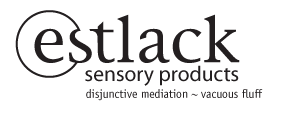-
Liquitex® Professional Acrylic Artist Color - Heavy Body - (click for details)
-
These formulations are based on Liquitex® Professional Acrylic Artist Color, Heavy Body Paints. These can be found at any art or craft store. This brand of paint is widely used by amateurs and professionals alike. It's also used in pigment formulations for skin by makeup artists in the film industry, when mixed with pros-aide. The formulas here, may work for other brands of acrylic paint. See back of tube or container for pigment information.
- White - Titanium White - pigments used :PW 6
- Blue - Phalocyanine Blue (Green Shade) - pigments used: PB 15
- Red - Deep Magenta - pigments used: PR 122, PV 19 DL, PW 6
- Yellow - Cadmium Yellow Light - pigments used: PY 35
- Black - Mars Black - pigments used: PBk 11
You can use the color charts on the following pages to mix large amounts of custom colors in relatively short amounts of time. You still have to use your intuition, as the equations here aren't perfect, but they will help you quickly block in specific colors.
I recommend using a triple beam balance. Digital scales (such as digital food scales) are ok, but they are very inaccurate and don't measure in tenths of grams. Depending on the amount of color you are mixing,
you can mix colors with an electric drill with a mixer attachment or using a popsickle stick. Basically, you drop
different measurements of paint into a cup and mix it up to get the color you are looking for.
Make adjustments as you need to. For Example, lighter colors require slightly lesser amounts of the darker colors called for.
- Valspar® Ultra - Acrylic Latex Paint - (click for details)
-
You have to go to the hardware store and have them mix the following custom colors. I recommend buying the paint in 29 Fluid Ounce cans. The paint is called Valspar® Ultra Premium. It's an Acrylic Latex based commercial house paint.
I usually work with the following colors:
- White - 1 gallon (It's called Eggshell Ultra White - sitting on the shelf)
- Blue - 29 Fluid Ounce can - Custom paint mix using Pthalocyanine Blue - use this code:
MANUAL DISPENSE - One Gallon - 102-2Y
- Red - 29 Fluid Ounce can - Custom paint mix using Magenta - use this code:
MANUAL DISPENSE - One Gallon - 115-2Y
- Yellow - 29 Fluid Ounce can - Custom paint mix using Yellow - use this code:
MANUAL DISPENSE - One Gallon - 114-2Y
- Black - 29 Fluid Ounce can - Custom paint mix using Black - use this code:
MANUAL DISPENSE - One Gallon - 101-2Y
These paints are suitable for indoor murals. You can use the color charts on the following page to mix large amounts of custom colors in relatively short amounts of time. You still have to use your intuition, as the equations here aren't perfect, but they will help you quickly block in specific colors.
I recommend using a triple beam balance. Digital scales (such as digital food scales) are ok, but they are very inaccurate and don't measure in tenths of grams. Depending on the amount of color you are mixing,
you can mix colors with an electric drill with a mixer attachment or using a popsickle stick. Basically, you drop
different measurements of paint into a cup and mix it up to get the color you are looking for.
Make adjustments as you need to. For Example, lighter colors require slightly lesser amounts of the darker colors called for.
-
Utrecht® Studio Series Tempera Paints - (click for details)
-
The tempera colors that these equations are formulated around are by Utrecht®. They are called Utrecht® Studio Series™ Tempera, and are sold in 16.9 Fluid Ounce bottles. They are very inexpensive and are great when incorporated with standard watercolor painting techniques.
Purchase the following:
- White - with White Pigment PW 6
- Black - with Black Pigment PBK 7
- Blue - with Blue Pigment PB 15
- Red - with Red Pigment PR 57:1
- Yellow - with Yellow Pigment PY 14
These paints are suitable for watercolor paintings. You can use the color charts on the following page to mix small amounts of custom colors in relatively short amounts of time. You still have to use your intuition, as the equations here aren't perfect, but they will help you quickly block in specific colors.
I recommend using a triple beam balance. Digital scales (such as digital food scales) are ok, but they are very inaccurate and don't measure in tenths of grams. Depending on the amount of color you are mixing,
you can mix colors with an electric drill with a mixer attachment or using a popsickle stick. Basically, you drop
different measurements of paint into a cup and mix it up to get the color you are looking for.
Make adjustments as you need to. For Example, lighter colors require slightly lesser amounts of the darker colors called for.
